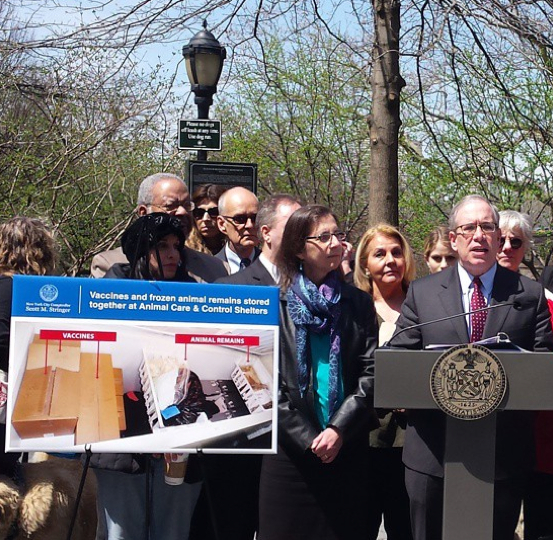
Office of the Comptroller
Comptroller Stringer releases his audit on Sunday. The agency in question has already taken steps to address some of the problems he found.
A comptroller’s report released over the weekend faulted the way the city’s animal control system handled dangerous medication, maintained its facilities and managed its finances, echoing concerns voices by animal advocates for several years.
Animal Care & Control, the non-profit organization that operates the city’s animal shelters under a municipal contract, agreed with many of the findings and has already taken action to address some—including devoting $8 million in capital funding to make better use of space.
The concerns about controlled substances included deficiencies in tracking, storing and using drugs—including the use of expired medication. On the financial issues, the comptroller found that “AC&C generally recorded and reported its revenue and expenses appropriately and maintained the required insurance. However, the audit
found several minor financial control weaknesses which need to be strengthened.”
The facilities questions most closely echoed complaints that advocates have made for years, and which were detailed in City Limits’ 2012 report on AC&C (which provides key background on the agency and its history).
Stringer’s office reported:
… the audit found physical conditions in the shelters that needed to be addressed, only some of which have been to date. Short term problems identified included a strong gas odor in the general corridor of the Brooklyn shelter, and peeling paint above dog kennels and a defective fire alarm in the Staten Island shelter. Potentially longer term problems observed included isolation rooms for sick animals and service rooms with healthy animals that share the same HVAC system, and doors to the dog isolation room that did not close fully in the Brooklyn shelter. Additionally, the Manhattan shelter did not have a backup generator, and animals are housed in overcrowded conditions while there is a large underutilized garage with approximately 2,500 square feet of space attached to the facility used for storage.
After being shown the audit, “the city has set aside approximately $8 million in capital funding to design and construct a building dedicated to the adoption of animals on the site of the underutilized garage adjacent to the Manhattan shelter, to redesign and replace the HVAC system at the Brooklyn shelter, and other operational enhancements,” the report reads.
As Jillian Jonas’ 2012 story reported, AC&C has been controversial from its very start because it is officially independent but draws its budget mainly from the city’s Department of Health and Mental Hygiene, uses city-owned facilities and has all nine of its board members appointed by the mayor.








